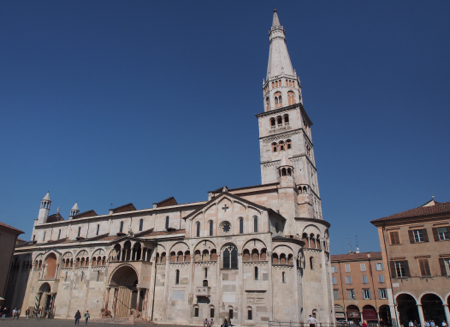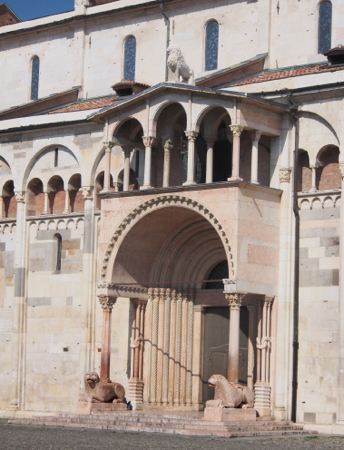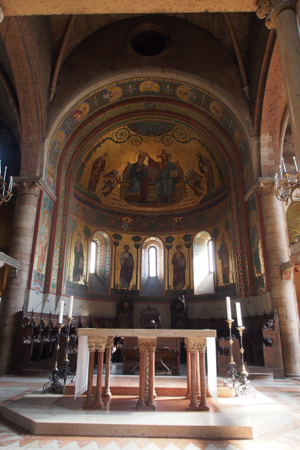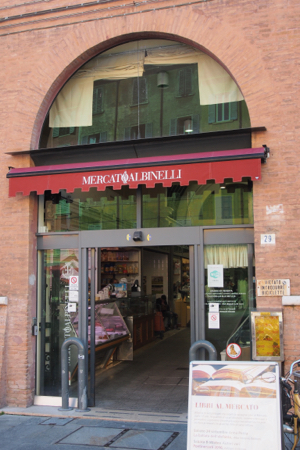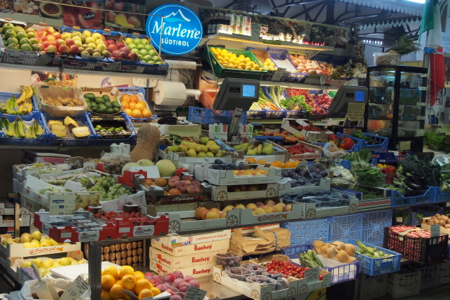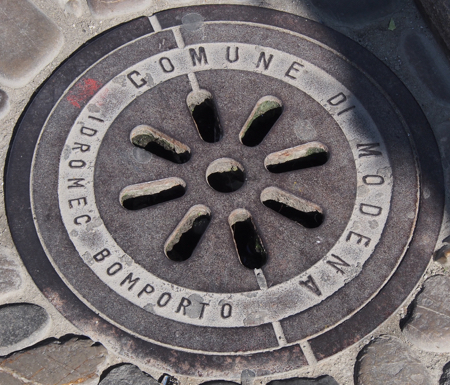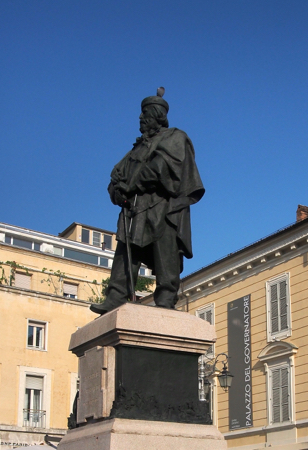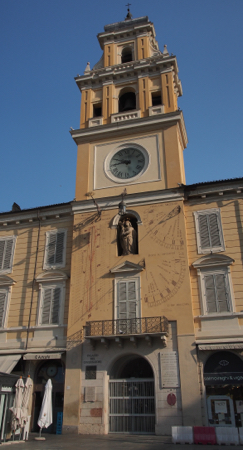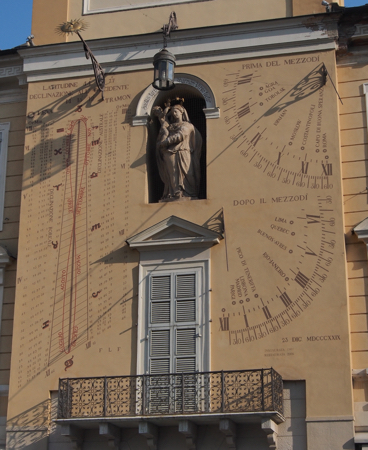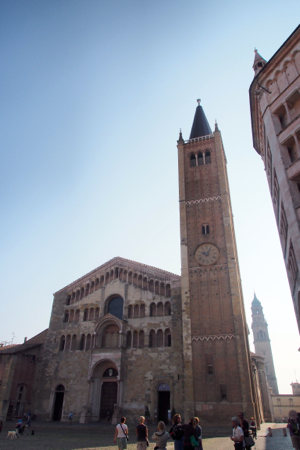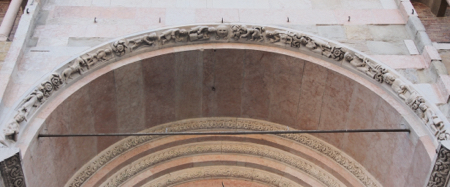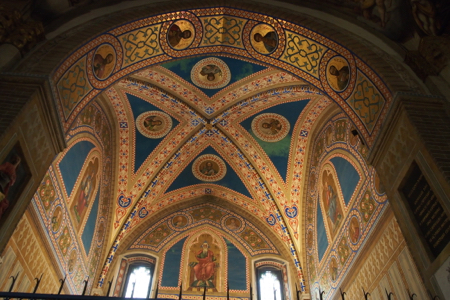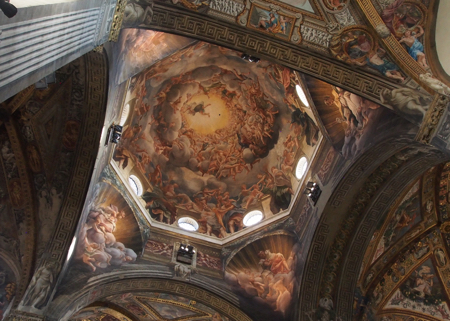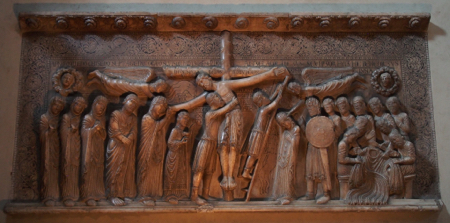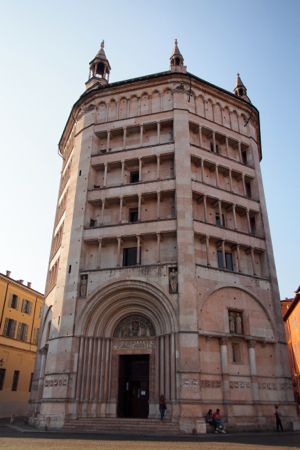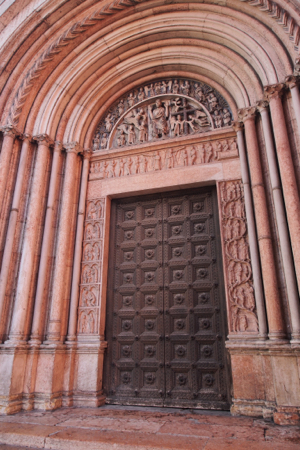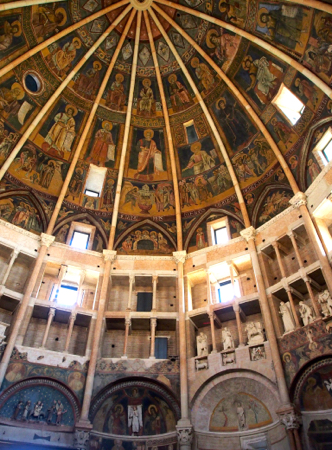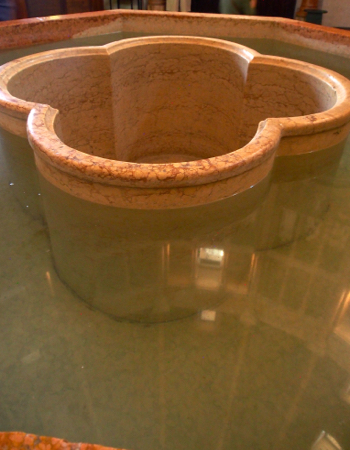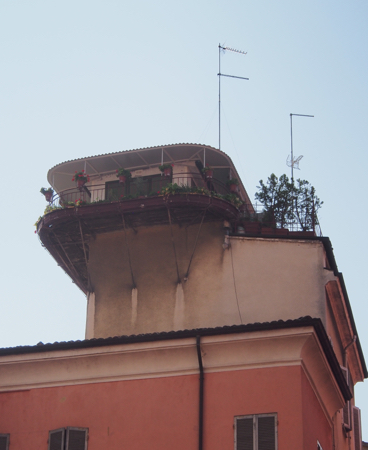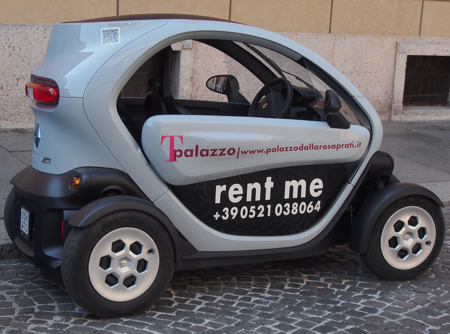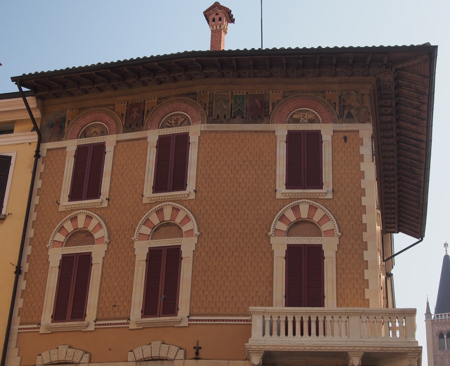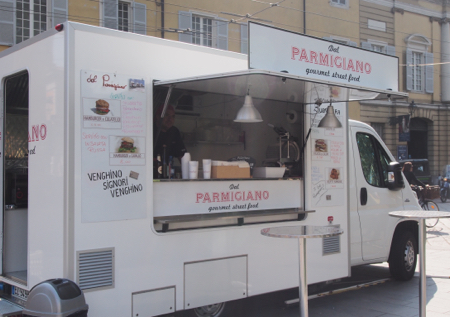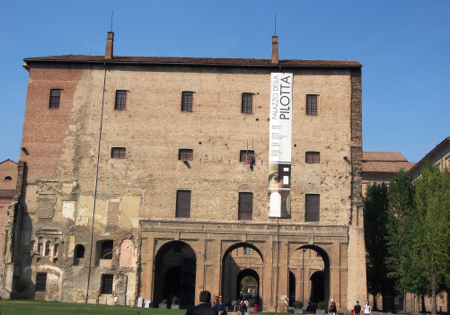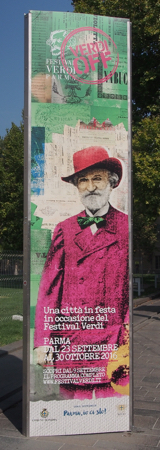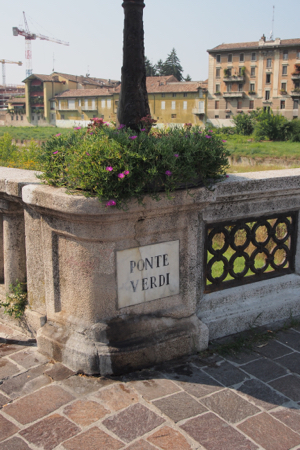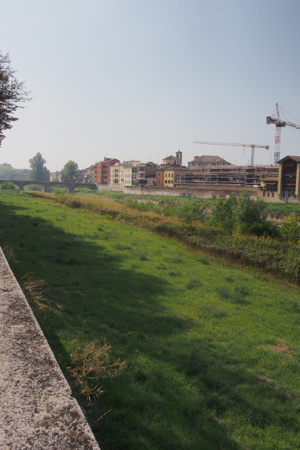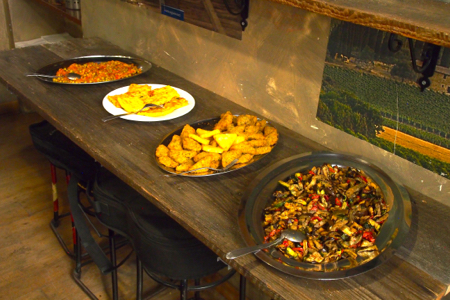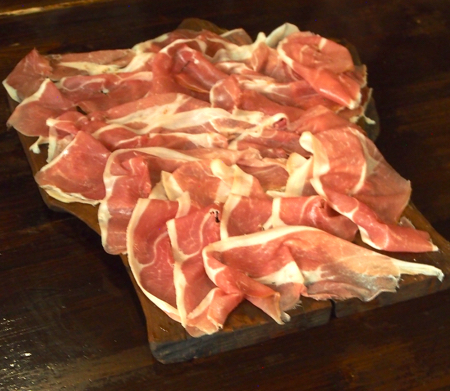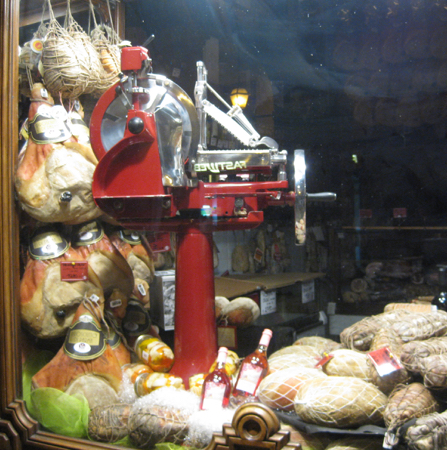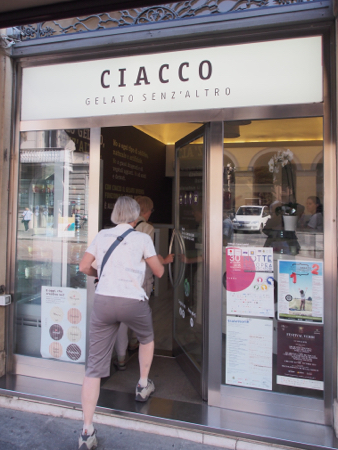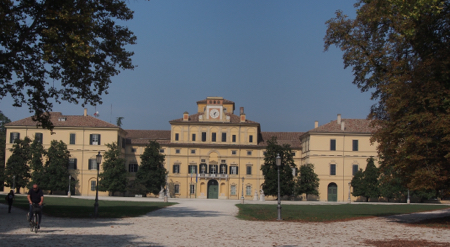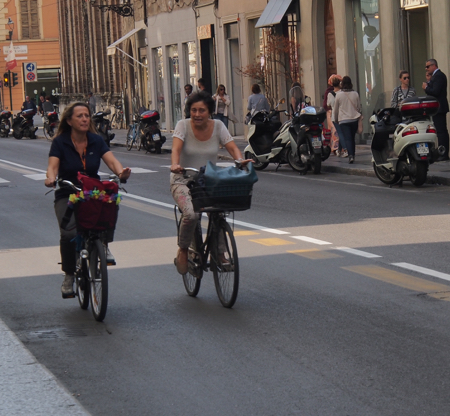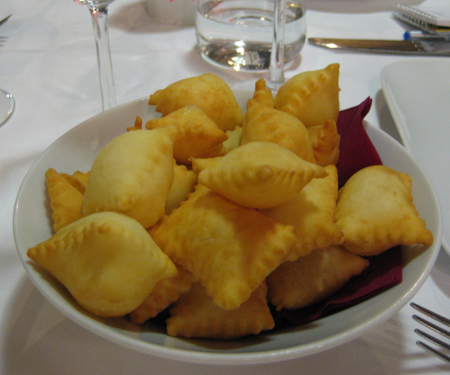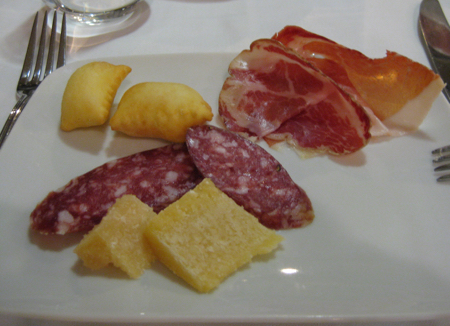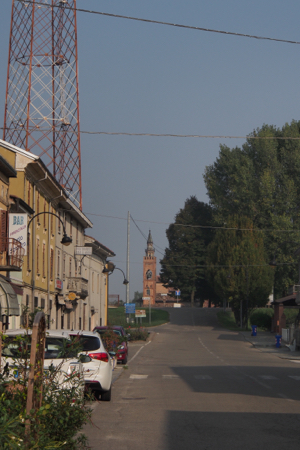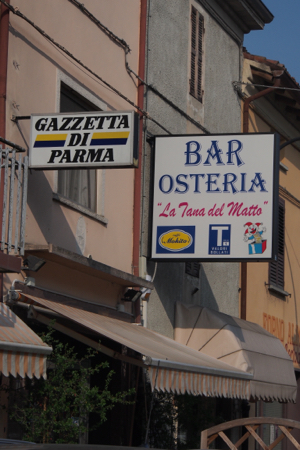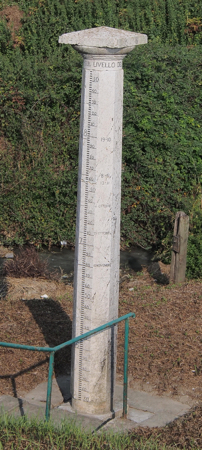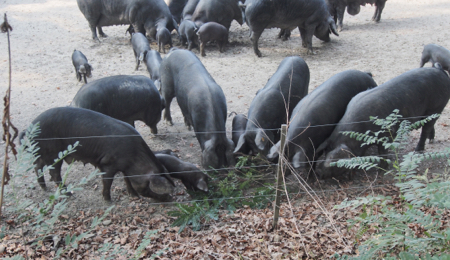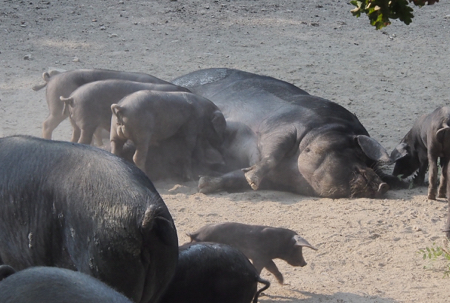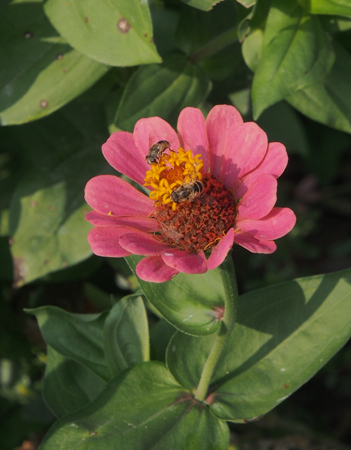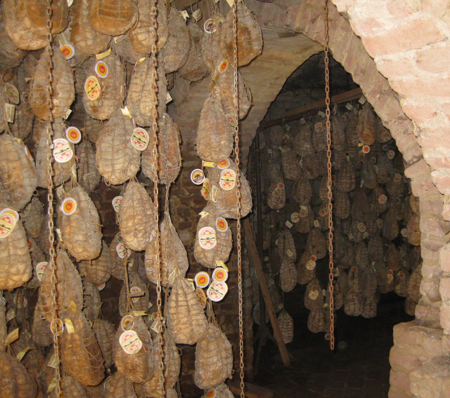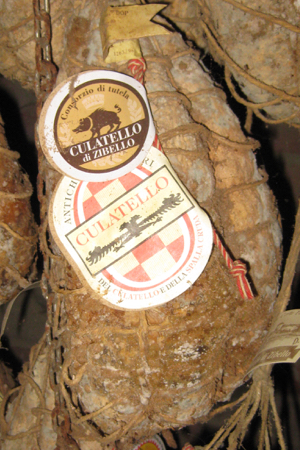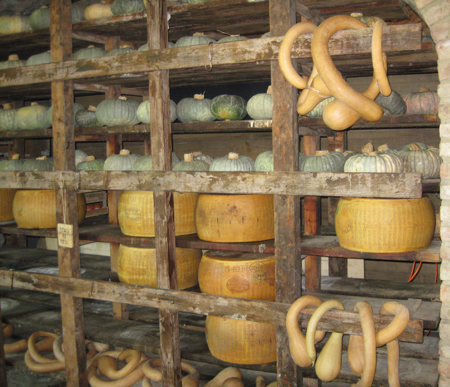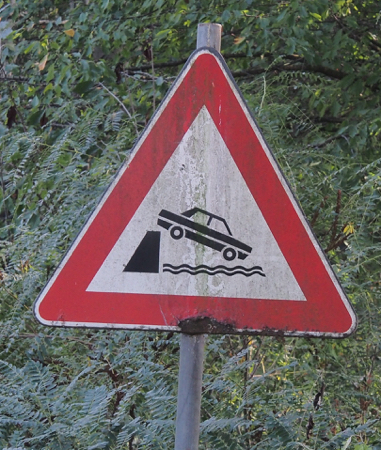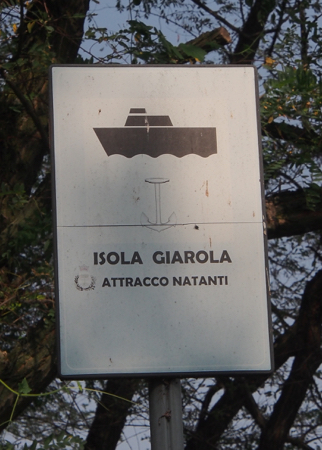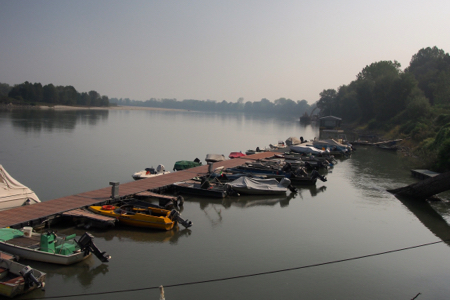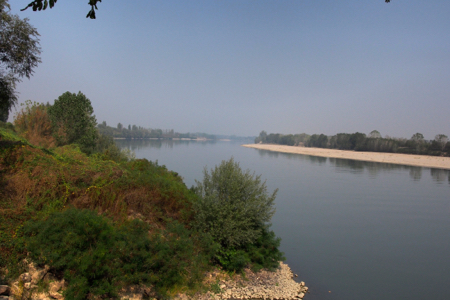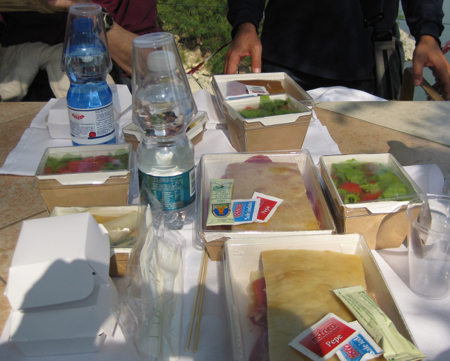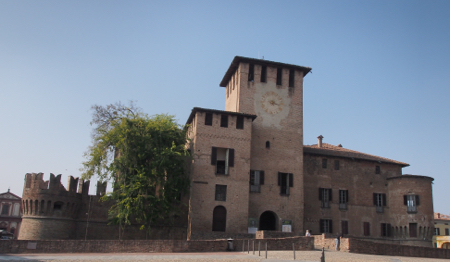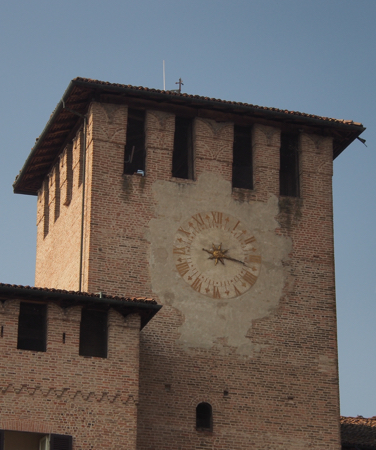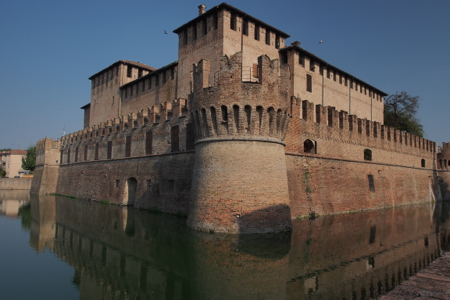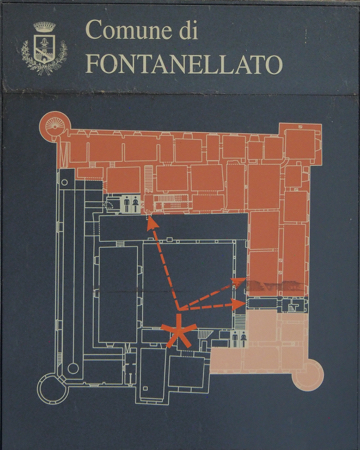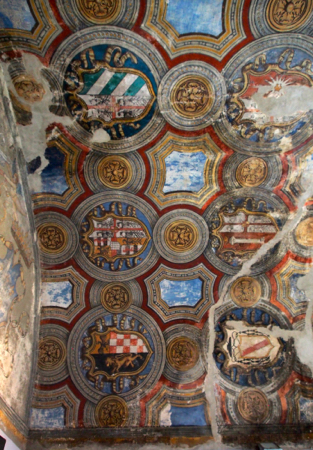Continuing on toward Parma, we stopped in Modena to look at another church. It was rather plain but originated in the 700’s and was added onto in the 9th and 11th centuries. We strolled around a bit, looked at a leaning bell tower, and then walked through the town market.
Duomo or Cathedral to the Assumption of the Virgin Mary and Saint Geminianus and the Ghirlandina Tower
Duomo or Cathedral to the Assumption of the Virgin Mary and Saint Geminianus
Interior of the Cathedral
Market
Market
Interesting manhole cover
Finally, we arrived in Parma at 3:30 and walked around the block and found a nice “mercato.” Our hotel, the Grand Hotel de la Ville, and adjacent buildings were once a Barilla pasta factory. We were given a "room" that was like an apartment without a kitchen. We have 1½ baths with a separate shower and a Jacuzzi tub. The living room has a couch and chair and a table with four chairs. We went to the grocery and bought salads and sweets for dinner and ate at our dining table.
This morning we walked a half-mile into Piazza Garibaldi to meet our local tour guide, Alicia. She was an art history major and did an excellent job explaining the art in the Cathedral and Baptistery. It is one thing to go in and admire frescoes, sculptures, and decorations but even better to have important pieces explained.
Parma is described as the “food capital of UNESCO.” It was built on a marsh by the Romans in at least 2 BC. They created canals to move soldiers and materials around and to dry out the marsh and build buildings. A statue of Garibaldi who, with 1,000 men, was able to fight and unite Italy for Victor Emanuel in 1861, sits in the square surrounded by the governor’s and the mayor’s buildings.
Statue of Garibaldi (with pigeon)
Governor’s Palace and sundial
Governor’s Palace and sundial
We walked to the Piazza Duomo with the cathedral, the octagonal Baptistery, and the bishop’s palace. The cathedral was built in the 12th and 13th centuries of brick, sandstone, and marble. The outside is Romanesque and plain but every inch of the inside has frescoes and paintings. There are three levels, the nave for prayer, the elevated altar, and the crypt below. From the prayer level you see the Ascension of the Virgin but only from the altar or church level do you see an unusual picture of Christ falling in a vortex. The painter, Correggio, never explained the meaning of the position of Christ.
Displayed on one wall is Deposizione sculpted by Benedetto Antelami in 1178. This piece has much significance to the 12th c. On the left of the cross and Jesus are the Christians with light shining on them. On the right are Jews indicated by the word for synagogue and Roman soldiers playing dice on Jesus’ robe. These figures are in darkness. It is a very intricate marble carving with lots of meaning.
The Baptistery is octagonal and the outside is Verona pink marble. The outside is a shell above the interior vaulted ceiling. There are three doors: one for the clergy, one for the baptized people with Christian depictions, and one for the unclean, unbaptized with pagan carvings above it. Inside is a huge baptismal font two meters deep. It is carved from a single block of marble.
Parma Cathedral and bell tower
Parma Cathedral
The arch over the entrance to the cathedral has the cycle of months carved in the marble. For October there is an unusual slaughter of a hog. Parma is famous for salami, prosciutto, etc. and one hog would feed a family for the rest of the year.
Parma Cathedral
Parma Cathedral - Correggio's "Assumption" cupola fresco
Parma Cathedral - Benedetto Antelami's - Deposizione
Baptistry of Parma
Baptistry of Parma
Baptistry of Parma
Baptistry of Parma
Baptistry of Parma
Next stop was the Regio Theater (opera house) but did not go in to see where all the famous soloists have performed. Instead we sat and had coffee or cappuccinos in the theater cafe (1.5 € – cheap).
We walked past the theaters and museums of the Pilotta, once a ducal palace to the Po River where water only flows in times of flood.
Pent house
Cute little car
Building facade
Food truck vendor
Pilotta - theaters and museums
Verdi festival
Ponte Verdi across the Po River
Po River
Finally, we got to sit down in a meat shop and sample Parma's famous prosciutto ham and fizzy white wine. Alicia showed us how to eat the prosciutto, fat and all: You pick it up with the fingers and lower it into the mouth after smelling its fragrance. It is best eaten with white wine.
After this tasting experience, we bought gelatos at Ciacco and walked to Parco Ducale as we ate it and then walked back to the hotel for relaxation time.
Meat Shop - Typical dishes
Meat Shop - Prosciutto ham
Ham cutting machine - it does not generate heat while slicing the ham - heat while slicing would spoil the flavor
Can't get to the gelato fast enough
Ducal Palace in the Parco Ducale
Bike riders
Our included dinner tonight was “traditional” Parma food. We all walked back down into town and sat outside at Tratoria Sorelle Picchi. It was a four-course meal served over two hours. It was again far too much food. We had Parmesan cheese and prosciutto, little pillows of bread, three kinds of ravioli, pork baked with Parmesan cheese and new potatoes, and orange slices with kiwi sorbet.
Dinner
Dinner
Thurs., 9/29/16 – Parma and the Po River
Today we drove the town of Polesine Parmense. It is about 3 km from the Po River but the November floods can reach the earthen barriers this far away.
| Return to Top | Return to Itinerary | Return to Trips page to view other trips | Return to Dreamcatcher Home Page |
